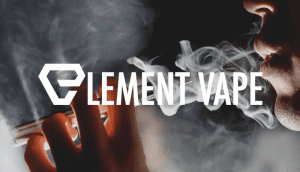Vaping as an alternative smoking solution has grown immensely over the last decade, prompting debate around its taxation. Vaping is often treated differently from traditional cigarettes due to being relatively new; thus its tax policies differ substantially, leaving policymakers and experts grappling with long-term implications unsure how best to regulate it. This article investigates why these disparities exist taking into account historical, social, and health factors which influence taxation decisions.


1. Historical Context
It has long been used by governments as both an effective revenue generator and means to reduce smoking; since 17th Century tobacco taxes have been levied both for revenue collection as well as smoking prevention purposes – in fact the U.S. collects billions annually through excise tax and settlement payments alone! In comparison with tobacco products which have long been heavily taxed, vaping products emerged during early 2000s; their rising popularity allowed them to avoid many of these taxes, with no federal and very few state levies yet levs being levied against vapers which has resulted in no federal or state levations yet in regards to vaping; no federal levation laws yet have been put in effect yet for vaping despite decades of taxation on tobacco products over decades!
2. Health Implications
Vaping and smoking taxes are heavily influenced by health considerations. Cigarette smoking has been linked with numerous serious medical issues including cancer, heart diseases and respiratory ailments – so high taxes have been levied against this behavior to discourage it. Nearly 480,000 Americans die each year from smoking cigarettes; although vaping may be less harmful in its short existence than smoking cigarettes. Yet long enough has passed for us to fully assess its long-term impacts and make any definitive assessments about long-term impacts of vaping on health and mortality rates. Public health advocates remain wary about e-cigarettes for young people’s wellbeing despite them exposing users to less harmful chemicals than smoking tobacco cigarettes. Vaping is also controversial product with regulators being unable to establish appropriate tax rates due to health effects associated with vaping products.
3. Public Policy and Regulation
To reduce smoking rates, taxes on tobacco aim at making cigarettes more costly by increasing prices; studies have proven this effect particularly among teens and individuals with low incomes. Vaping presents its own set of challenges: some policymakers believe heavy taxes should also apply on electronic cigarettes (EV) so as to curtail youth vaping; however others think a steep tax might deter adult smokers from vaping; furthermore it might hinder vape use as harm reduction options; the policy conflict between restricting vaping risks while encouraging safe alternatives presents another difficult dilemma that should not exist: it poses both conflicts within policy conflicts simultaneously – providing one set of solutions is difficult and encouraging the other in both policy conflicts simultaneously!
4. Considerations of Social Nature
Tax systems have both social and economic ramifications; tobacco taxes tend to disproportionately afflict smokers on lower incomes more severely, who may struggle more when taxes increase; vaping follows similar principles in this respect. Vape taxation could pose an obstacle for smokers who wish to switch over from cigarettes and nicotine patches, according to critics who feel such high tax rates punish those most economically vulnerable. Supporters counter that smoking poses such an enormous cost to society that higher taxes should be justified. When crafting an equitable tax plan, it is vitally important that these social economic dynamics be taken into consideration.
5. Challenges of Regulatory Compliance
Vaping devices present many unique obstacles when it comes to taxing them, creating one of the primary impediments to compliance. Vape products differ dramatically from traditional cigarettes in their delivery method of nicotine delivery – each vape and mod has different ways of dosing, while some products contain higher or lower nicotine concentration levels; it makes applying standard taxation rates across products difficult due to such diversity; some jurisdictions have chosen sales taxes over comprehensive regulatory strategies as an interim solution.
As research clarifies long-term impacts of vaping products, governments may need to reconsider how they tax these items as research becomes clearer. Studies that demonstrate similar health risks between vaping and cigarettes may lead to government action to tax vaping similarly; but if findings indicate safer alternative such as vaping may encourage regulators to keep taxes low for these alternatives compared with cigarettes – vape taxation likely follows scientific consensus regarding impact of use on health.
Conclusion of Article (and my emphasis):
Debates surrounding taxing vaping vs smoking reflect larger issues related to revenue, public health and harm reduction. Governments face the challenging task of striking a balance among these priorities as vaping becomes more popular; as we learn more about its long-term impacts and tax policies adjust accordingly – yet current differences between how vaping is taxed relative to smoking highlight just how difficult regulating new technologies is within contexts of public safety regulation.
This comprehensive examination of vape taxes highlights the significance of research and policy creation as part of an evolving nicotine ecosystem. Regulator frameworks must constantly adapt as nicotine markets change over time.








